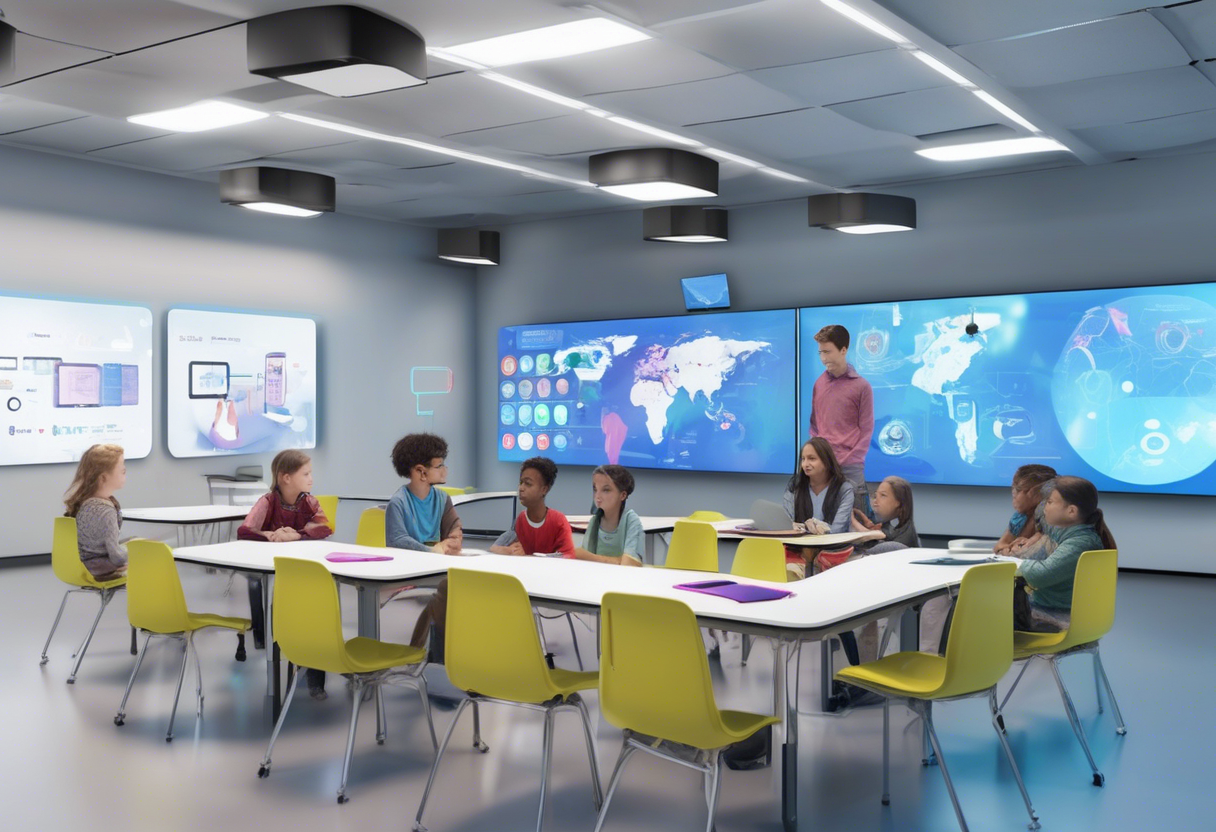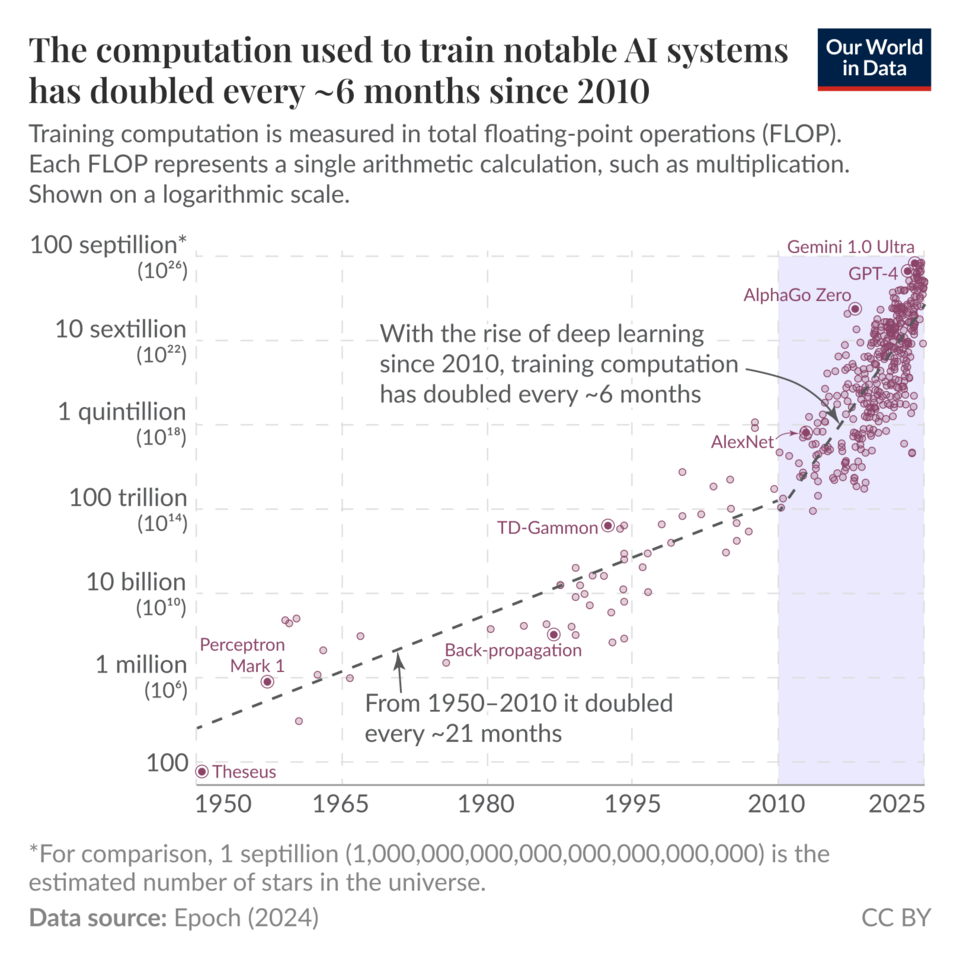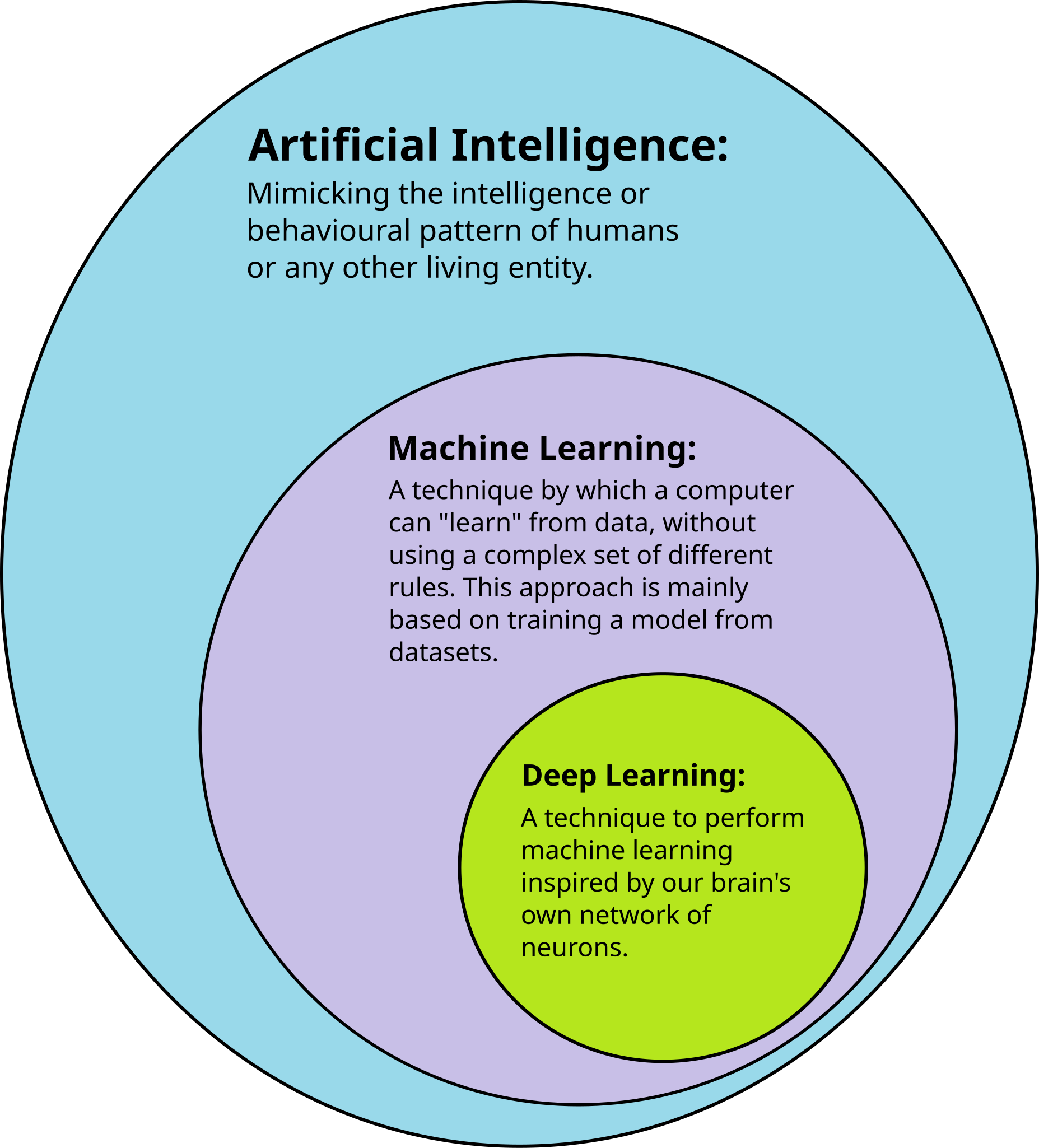
Think about a classroom where learning is tailored just for you, thanks to AI. It's not some far-off dream; it's happening now. With AI, education is changing to fit each student's needs. We're not just talking about it; it's actually reshaping how teachers teach and students learn. Did you know that over 47% of learning tools now use AI? It's true, and it's making teaching better and students more engaged. In this article, we'll look at how AI is changing education, see some real-world examples, and share stories that show its potential. Ready to explore how learning is evolving? Let's dive in!
Summary: AI's Transformative Role in Education explores practical use cases and success stories of AI integration in learning and development. The article also addresses frequently asked questions about the impact of AI in educational settings.
AI's Transformative Role in Education
AI Integration in Learning and Development
AI in education is shaking things up, much like the internet did back in the day. It's changing how we think about learning and development. Instead of the old one-size-fits-all teaching, AI offers personalized tutoring that fits each student's needs. This shift aligns with Universal Design for Learning principles, helping teachers adapt lessons and tests for all kinds of learners. It's making education more inclusive and boosting motivation. With AI, we're not just changing how we teach; we're improving learning outcomes.
Universities are using AI-based tutoring systems to give students personalized feedback and learning paths. This boosts engagement and academic success, ensuring no one gets left behind. AI looks at student performance to find learning patterns, allowing teachers to customize their strategies. Plus, AI takes care of tasks like grading and scheduling, so teachers have more time to teach and interact with students. AI isn't just for schools; it's also making waves in corporate training and professional development, helping employees learn new skills and keep up with workplace changes.
Personalized Learning with AI
AI tools are leading the way in personalized learning. They analyze student performance in real-time to tailor lessons and create practice problems. This helps students focus on what they need to improve, making learning more engaging. AI models support flexible course policies and self-assessment skills, catering to different learning styles and encouraging student independence. For example, an AI platform might notice a student struggling with algebra and offer tailored exercises to help them master it.
Adaptive AI Learning Platforms
Platforms like DreamBox and Smart Sparrow use AI to adjust task difficulty based on how a student is doing. They provide immediate feedback and suggest resources that match a student's needs. By constantly adapting to progress, these systems keep motivation high and improve outcomes.
AI-Driven Content Creation
AI also helps create engaging educational content. Tools like Content Technologies, Inc. use AI to develop textbooks that fit specific courses and objectives. These AI-generated materials stay up-to-date and meet current educational standards.
AI-Driven Tutoring and Support Systems
AI tutoring systems offer personalized, interactive help, letting students engage with material in ways that suit them. This expands opportunities for academic success by providing on-demand support outside regular class hours. AI works with teachers to offer customized resources, digital tutors, and new experiences that meet individual needs.
Virtual AI Tutors
Apps like Carnegie Learning's MATHia and Squirrel AI use AI for personalized tutoring. They analyze student responses and give tailored feedback, ensuring students get help when they need it. By simulating one-on-one sessions, these systems help fill understanding gaps and boost performance.
AI-Powered Educational Chatbots
Chatbots like Watson Tutor and Third Space Learning offer instant support by answering questions and explaining topics. Available 24/7, they're a valuable resource for students needing help outside school hours. Using natural language processing, these chatbots understand and respond conversationally, enhancing learning.
Enhancing Educator Effectiveness with AI
AI boosts educator effectiveness by automating routine tasks and offering data-driven insights. Professional development programs focused on AI help teachers confidently use these tools in classrooms. AI supports teachers by streamlining admin tasks and guiding teaching strategies, moving from traditional lectures to dynamic learning. Education policies are updating credential requirements to prepare teachers and students for an AI-focused future.
AI Automated Grading Systems
AI grading systems like Gradescope and Turnitin automate assignment and exam grading. They use machine learning to evaluate submissions, providing consistent feedback.

This saves grading time, allowing educators to plan and deliver engaging lessons.
AI Professional Development Tools
AI tools like TeachFX and Edthena give teachers personalized feedback and coaching. They analyze classroom interactions, offering insights to refine skills and improve engagement. By fostering continuous improvement, AI helps teachers deliver more effective instruction.
Ethical Considerations and Responsible AI Use in Education
As AI becomes more common in education, ethical use is crucial. Challenges include data privacy, bias, equity, and tech reliance, requiring responsible practices. Toolkits guide schools on AI's benefits and risks, helping states support responsible adoption.
AI Data Privacy and Security
AI in education involves collecting lots of student data, raising privacy concerns. Schools must protect this data and comply with regulations like GDPR and FERPA.
AI Bias and Fairness
AI systems should minimize bias and ensure fairness. Developers need to identify and reduce biases in algorithms that could disadvantage students. Promoting diversity in AI design ensures equitable learning access for all.
Global Perspectives on AI in Education
The U.S. aims to boost AI literacy among youth to lead in AI tech and innovation. Efforts include AI education from early learning to postsecondary levels and lifelong resources for a changing workforce. Federal initiatives fund AI curriculum and teacher training, showing a commitment to an AI-ready workforce.
AI in Developed vs. Developing Countries
In developed countries, AI in education benefits from advanced tech and research investment, improving outcomes and efficiency. Developing countries face challenges like limited tech access and funding, but AI offers scalable solutions for educational disparities.
Cultural Attitudes and AI Educational Policies
Cultural views on tech and education impact AI adoption. Some regions resist AI tools due to job concerns. Policies promoting digital literacy and AI integration can overcome barriers and foster positive attitudes.
Deepbrain AI and AI Studios in Education
While specifics on Deepbrain AI and AI Studios in U.S. education aren't available, these platforms leverage AI to transform educational experiences, enhancing teaching and learning.
In summary, AI in learning and development is changing education with personalized experiences, boosting educator effectiveness, and addressing ethical issues. As AI advances, its potential to revolutionize global education becomes clearer.
Generative AI in Higher Education
Navigating the AI-Driven Transformation in Education
State Education Policy and the New Artificial Intelligence
Advancing Artificial Intelligence Education for American Youth
Role of AI in Modern Education
U.S. Department of Education AI Report
Practical Use Cases and Success Stories
AI Implementation Success in School Districts
AI is making waves in many areas, including education and business. Consider a major US healthcare provider that utilized an AI learning system to achieve remarkable results:
- Reduced training time by 30%
- Increased knowledge retention by 50%
- Improved patient care by 20%

This system tailored learning plans and set up virtual practice spaces, allowing for real-time checks and adaptive learning. You can read more about this AI-powered learning system.
In a similar vein, Walmart leveraged AI to create role-play scenarios and bite-sized learning modules, enhancing both customer satisfaction and employee engagement.
Meanwhile, McDonald's integrated AI into its training with voice-activated systems and data insights, resulting in:
- 65% reduction in hiring time
- 20% increase in candidate completion rates
These examples demonstrate the flexibility of AI in improving learning and efficiency across various fields.
AI-Driven Skills and Career Pathways
AI isn't just transforming current learning; it's also gearing us up for future jobs. AI-powered systems adjust learning paths based on performance, existing skills, and career goals, which boosts engagement and accelerates learning. Learn more about Adaptive learning systems.
Additionally, AI-driven VR and AR platforms provide immersive training for both soft skills and technical tasks, preparing employees for the digital shift.
Organizations are fostering an AI-first mindset by encouraging employees to initiate small AI projects to address specific business challenges. These projects enable employees to:
- Apply AI in real-world scenarios
- Build relevant skills
- Support career advancement

For further insight, explore AI pilot projects. By integrating AI into learning and development, organizations are not only enhancing current educational experiences but also equipping the workforce for future career demands.
FAQs on AI in Learning and Development
Integrating AI into Educational Curriculums
In the U.S., integrating AI into school curriculums aligns with national policies promoting AI literacy. The goal is to prepare students for an AI-driven job market by introducing AI concepts early. Federal guidance and funding support this initiative, emphasizing personalized learning and critical thinking. Schools can leverage federal grants to enhance learning through AI, sparking student interest and innovation.
AI education can be broken down into key areas:
- Understanding AI
- Using AI
- Creating with AI
- Thinking about AI ethics

These areas can seamlessly integrate into current classes, providing students with a comprehensive understanding of AI. For instance, a school district might:
- Introduce basic AI concepts in early grades
- Train teachers with federal assistance
- Update learning systems for AI-driven personalized learning
- Incorporate AI ethics into lessons
For organizations looking to integrate AI, it's wise to assess their tech setup, data readiness, and staff's AI knowledge while securing leadership support. This foundation facilitates the integration of AI into learning programs, enhancing education overall.
Ethical Concerns of AI in Education
Using AI ethically in education is essential to maintaining trust and fairness. The primary concerns include:
- Fairness
- Transparency
- Avoiding bias
- Safety
- Focus on people

The U.S. Department of Education emphasizes involving parents and teachers in guiding AI's ethical use. This approach ensures AI supports personalized learning while safeguarding student data.
Addressing biases in AI is crucial to prevent unfair treatment and protect student information. Schools should implement AI tools with clear guidelines on data privacy, bias prevention, and transparency. Involving parents and educators in overseeing AI in classrooms helps maintain accountability and trust.
Teacher Training for AI Integration in Classrooms
Teacher training is vital for integrating AI into classrooms. U.S. policies include comprehensive AI training for educators to enhance AI literacy. These programs help teachers understand AI applications, ethical issues, and methods to use AI tools to boost student engagement and learning.
Educational leaders should align stakeholders and provide support to ensure teachers feel prepared and confident with AI technology. Federal grants might fund:
- Workshops on AI basics
- Practical classroom tools
- Ethical guidelines
- Ongoing support and resources
Collaborative learning, such as peer mentoring and online communities, provides teachers with ongoing support and opportunities to share successful practices. Platforms like EdTechTeacher offer resources and forums for educators to exchange experiences and learn from each other.
Hands-on experience with AI tools is crucial. Teachers should be encouraged to experiment with AI apps in a controlled setting to understand their capabilities and limitations. This practical approach builds confidence and competence in using AI to support diverse learning needs.
Promoting a mindset of continuous learning is essential. As AI technology evolves, so should teachers' understanding and skills. Encouraging educators to stay updated on AI developments and engage in lifelong learning keeps them at the forefront of educational innovation.
For further reading, check out the national policy on AI integration in education and workforce development and how major US companies like IBM, Amazon, Google, Microsoft, and McKinsey have successfully integrated AI into their learning and development initiatives. Additionally, the US Department of Education emphasizes addressing biases in AI algorithms used in education.